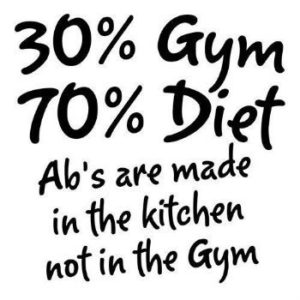
Diet v. Dieting:
The terms “diet” and “dieting” are often used interchangeably, but they actually have different meanings.
“Diet” refers to the types of foods and drinks that a person regularly consumes. A person’s diet can be healthy or unhealthy, depending on the types and amounts of foods that they eat. A healthy diet typically includes a variety of nutrient-dense foods such as fruits, vegetables, whole grains, lean proteins, and low-fat dairy products, while an unhealthy diet often includes processed foods, sugary drinks, and high-fat, high-calorie foods.
“Dieting,” on the other hand, refers to the act of restricting or modifying a person’s diet to lose weight or achieve other health goals. Dieting may involve reducing calorie intake, eliminating certain types of foods, or following a specific eating plan. While dieting can be effective for weight loss and other health goals, it is important to approach it in a healthy and sustainable way rather than resorting to fad diets or extreme measures that can be harmful to health.
In summary, the term “diet” refers to a person’s regular pattern of food and drink consumption, while “dieting” refers to the act of restricting or modifying a person’s diet in order to achieve a specific health goal. While both terms are related to food and nutrition, they have distinct meanings and should be approached in a balanced and healthy way. A focus on a healthy and balanced diet, rather than fad diets or extreme measures, is key to achieving long-term health and wellness.
Taking the first steps:
- Remove added sugars and food made with white flour
- Reduce alcohol consumption
- Start a fitness routine that combines cardio and weight training
- Every day, drink half your weight in water in ounces – for example, If you weigh 100 pounds, drink 50oz. of water daily
- Sleep 6 to 8 hours per day
Feed your muscles and your brain
Kill the brain and the body will follow. Focus on feeding your brain!
- Increase your daily consumption of blueberries – reference: Dr. Steven Pratt author of Superfoods Rx: 14 Foods Proven to Change Your Life.
- Increase your weekly wild salmon consumption to at least 2 times per week. Omega-3s
- Increase your daily consumption of nuts and seeds to include walnuts, hazelnuts, filberts, almonds, cashews, peanuts, sunflower seeds, sesame seeds, flax seeds. – Vitamin E.
- Increase your daily consumption of 1/2 of an avocado. blood pressure management
- Increase your whole grains – Oatmeal, whole-grain bread, and brown rice – reduce the risk of heart disease
- Increase your daily consumption of beans to 1/2 a cup – stabilize blood sugar
- Increase your daily consumption of Tea (Hot or Cold) freshly brewed – promotes healthy blood flow
- References:
- Dr. Steven Pratt, author of Superfoods Rx: 14 Foods Proven to Change Your Life
- WebMD: Carol Sorgen, Eat Smart for a Healthier Brain
My next steps…
- Eat a healthy breakfast to start the day every day
- Exercise for an hour a day
- Choice water over soda, and add a lemon
- Set, measure, and manage my daily and long-term health goals
- Manage my time efficiently
- Avoid Type 2 Diabetes following Dr. Sarah Hallberg…
THIS MAKES A TON OF SENSE…..AMAZING!
-
- Leave “light”, “low-fat”, or “fat-free” at the grocery store
-
- Eat real food. Run away from the carbs
-
- Don’t eat anything you don’t like
-
- Eat when you are hungry. Don’t eat when you are not.
-
- No grains, No potatoes, No sugars
Thank you, Dr. Hallberg & TEDx Talks!

Are you at risk for Type 2 Diabetes?
The American Diabetes Association (ADA) has an online test that can be taken to determine risk for Type 2 Diabetes. It’s good to know so you or your loved one can better manage the risks. The test is located at https://www.diabetes.org/risk-test.

Dietary Guidelines for Americans (2020-2025)
The U.S. Department of Agriculture and the U.S. Department of Health and Human Services released the Dietary Guidelines for Americans, 2020-2025. These are guidelines released per Federal civil rights law, regulations, and policies. This is the first time the recommendations are provided by life stage, from birth through older adulthood. The premise is that each life stage has unique needs that impact health and disease risk. The dietary guidelines are the science-backed basis for federally funded nutrition programs, which include school meal programs.
The released guidelines’ feedback suggests the guidelines capitulated to the Alcohol and Soda industry lobbying groups like the American Beverage Association. The Union of Concerned Scientists’ desire would have liked the recommendation of limiting alcohol intake for men to one drink per day. The current guideline recommendation is set at two drinks per day. Additionally, adult’s and children’s guidance to reduce sugar intake from a maximum of 10% to 6% of daily calories was also rejected.
Interestingly, the 2019 report from the Union of Concerned Scientist’s report, Delivering on the Dietary Guidelines, found that drinking just one fewer sugar-sweetened beverage per day could avert nearly 19,000 deaths from type 2 diabetes and decrease medical costs by $16 billion annually among US adults. I would encourage you to look at Dietary Guidelines for Americans (2020-2025) and Delivering on the Dietary Guidelines to arrive at your own conclusions.
